How to Hide Washing Machine Outlet Box (Easy DIY Solutions)
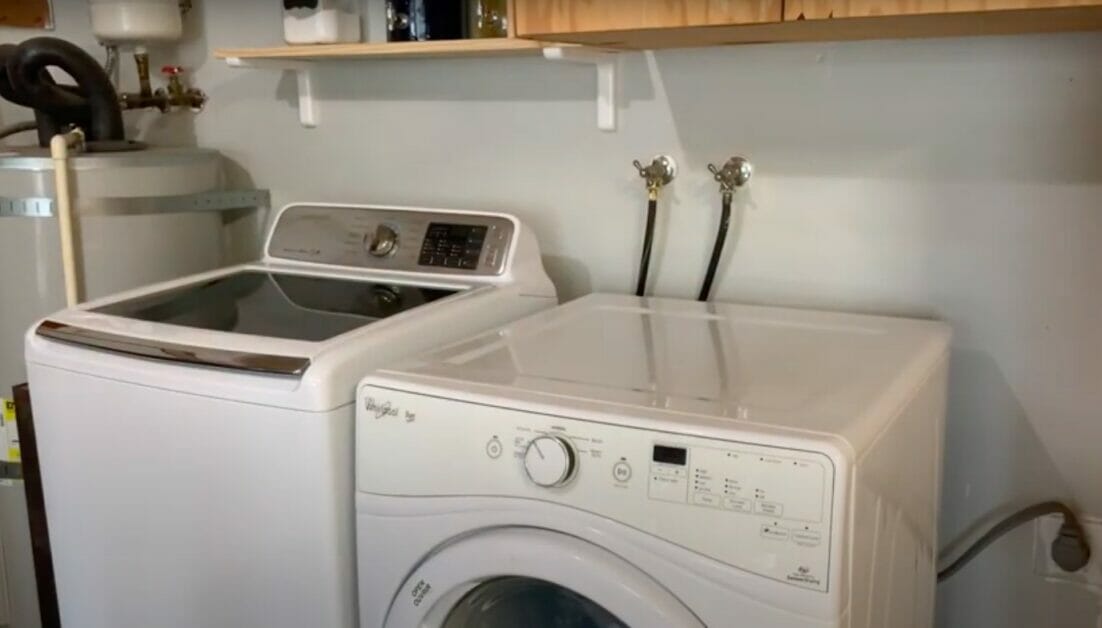
Laundry rooms can be the unsung heroes of our homes. But there’s always one small thing that can keep them from looking their best – I’m talking about those pesky washing machine outlet boxes.
Those with hoses and cords sticking out like a sore thumb. Trust me; I’ve seen my fair share of them.
One way to conceal the washing machine outlet box is to install a cabinet or shelf around it. Another option to hide the washing machine outlet box is to use a cover plate. Not only that, more options and ideas are available to hide your washing machine outlet box creatively.
That being said, I’m here to share more tips and tricks on how to hide that washing machine outlet box and turn your laundry room into a space you’ll love. Ready to dive in? Let’s do this!
Choosing the Right Cover for Your Outlet Box
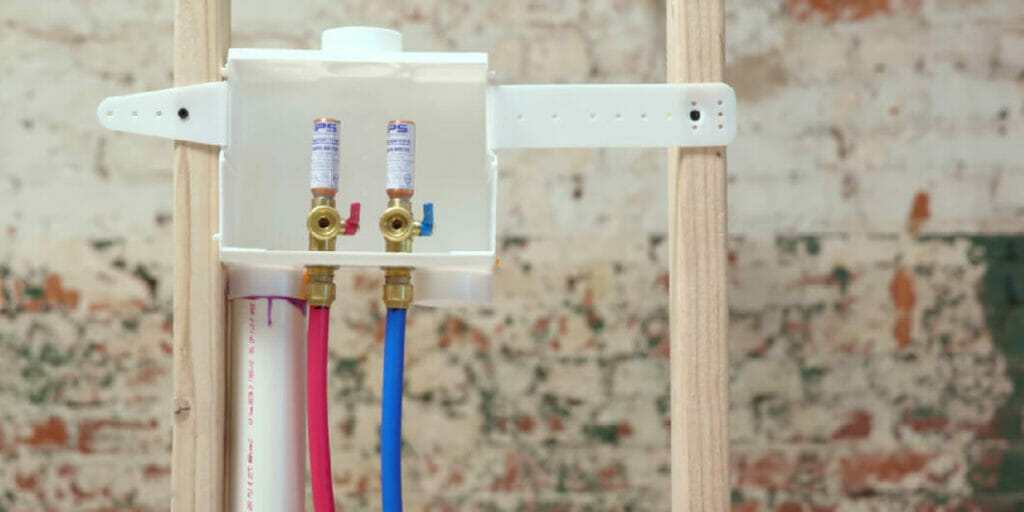
You have a few great options for hiding your washing machine outlet box. I’ll walk you through some of my favorite techniques so that you can choose the perfect one for your space. Let’s dive in!
Painting or Wallpapers
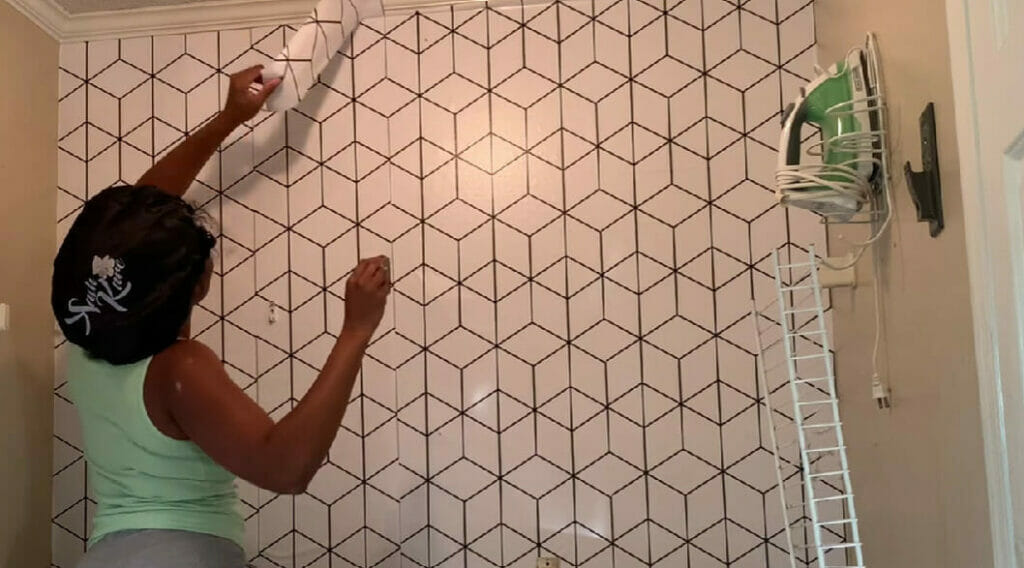
I love using paint or wallpaper to blend the outlet box into the surrounding wall.
You’d be surprised at how well it works! Choose a color or pattern that matches your laundry room’s decor, and folks will hardly notice that outlet box.
| Materials |
|---|
| Painting supplies (paint, brush, roller, painter’s tape, drop cloth) |
| Sandpaper (optional) |
| Wallpaper and wallpaper paste (if using wallpaper) |
| Wallpaper brush or smoothing tool (if using wallpaper) |
| Steps |
|---|
| Step 1. Turn off the power to the outlet box by switching off the circuit breaker or unplugging the washer. |
| Step 2. Remove the outlet cover and use painter’s tape to cover any areas you don’t want to paint or wallpaper. |
| Step 3. If there are any rough or uneven spots around the outlet box, use sandpaper to smooth them out. |
| Step 4. If you’re using wallpaper, measure the area around the outlet box and cut the wallpaper to fit. Apply wallpaper paste to the back of the wallpaper according to the manufacturer’s instructions. |
| Step 5. Carefully apply the wallpaper to the wall, smoothing out any bubbles or wrinkles with a wallpaper brush or smoothing tool. |
| Step 6. If you’re using paint, apply a coat of primer to the area around the outlet box. This will help the paint adhere better and cover any stains or marks. |
| Step 7. Once the primer has dried, apply one or two coats of paint to the area around the outlet box using a brush or roller. Allow each coat to dry completely before applying the next one. |
| Step 8. After the final coat of paint or wallpaper has dried, remove the painter’s tape and reattach the outlet cover. |
| Step 9. Turn the power back on and test the outlet to ensure it works properly. |
Cabinet or Shelf
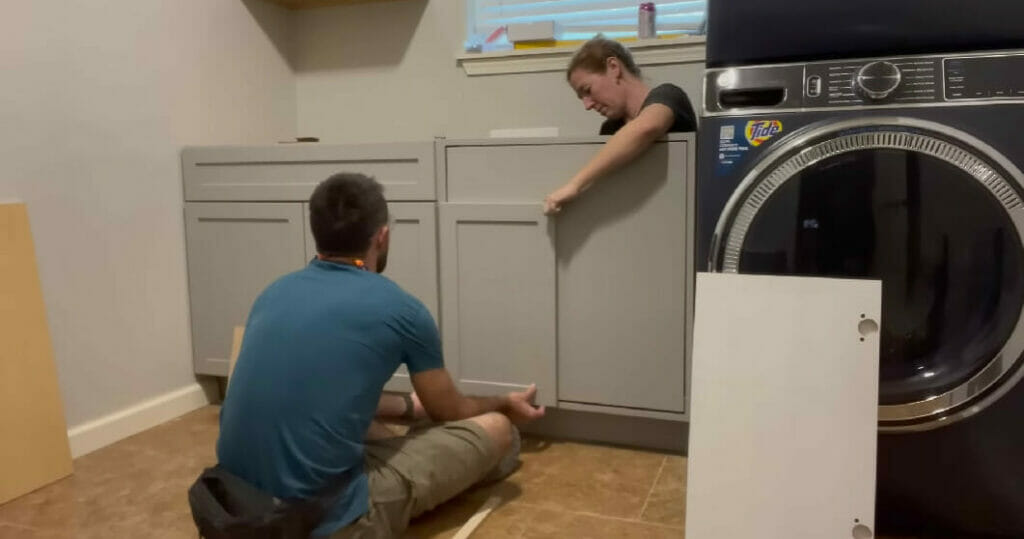
Adding a cabinet or shelf in front of the outlet box is practical and hides it from plain sight.
Consider installing a handy storage space or display shelf that conceals the box, and bam – problem solved!
| Materials |
|---|
| Cabinet or shelf |
| Washing machine outlet box |
| Drill |
| Hole saw |
| Screws |
| Screwdriver |
| Paint or stain (optional) |
| Steps |
|---|
| Step 1. Choose a location for the cabinet or shelf close to your washing machine that will provide easy access to the outlet box. Measure the outlet box’s dimensions and ensure the cabinet or shelf is large enough to accommodate it. |
| Step 2. Using a hole saw, drill a hole in the back of the cabinet or shelf the same size as the outlet box. Ensure the hole is in the right location to allow the outlet box to fit through. |
| Step 3. Install the washing machine outlet box into the hole in the back of the cabinet or shelf. Secure it with screws and a screwdriver. |
| Step 4. If desired, paint or stain the cabinet or shelf to match your decor. |
| Step 5. As usual, connect the washing machine hoses and electrical connections to the outlet box. The box should now be hidden behind the cabinet or shelf, giving your laundry area a clean and organized look. |
| Step 6. Test the washing machine to ensure everything is working properly and there are no leaks or issues with the outlet box. |
Decorative Panel
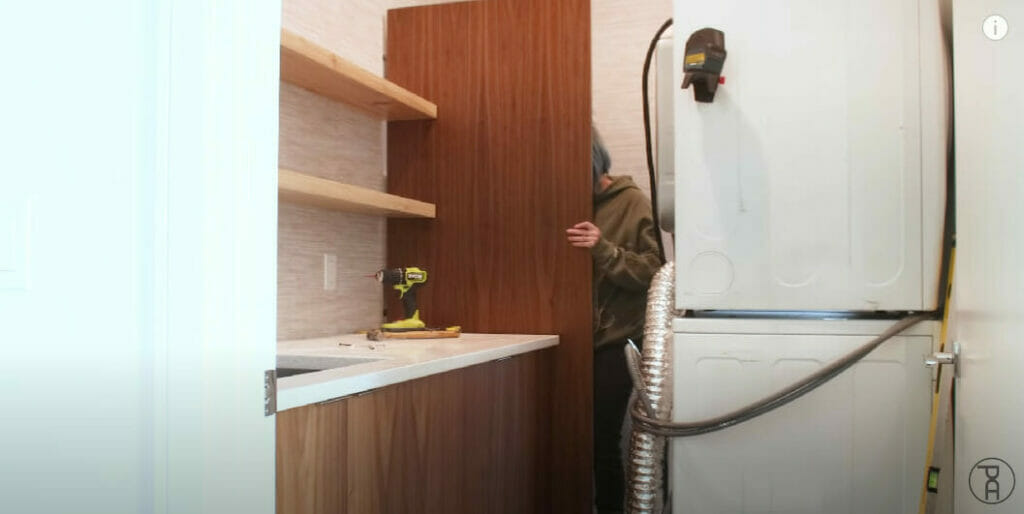
A decorative panel can make a stylish statement while hiding that pesky outlet box.
You can use wood, metal, or fabric to create a customized look that complements your laundry room.
| Materials |
|---|
| Decorative panel (wood, MDF, or another material of your choice) |
| Saw or jigsaw |
| Measuring tape |
| Drill |
| Screws |
| Screwdriver |
| Paint or stain (optional) |
| Steps |
|---|
| Step 1. Measure the dimensions of your washing machine outlet box, and transfer those measurements onto your decorative panel. Use a measuring tape and a pencil to mark the height and width of the box on the back of the panel. |
| Step 2. Use a saw or jigsaw to cut out a hole in the decorative panel that matches the dimensions of the washing machine outlet box. Make sure that the hole is centered on the panel. |
| Step 3. Hold the panel to the wall, with the hole aligned with the washing machine outlet box. Use a pencil to mark where the screws will go. |
| Step 4. Use a drill to make pilot holes at the pencil marks in the panel. |
| Step 5. Hold the panel up to the wall again, and use screws and a screwdriver to attach it to the wall, covering the washing machine outlet box. Make sure that the panel is securely attached and flush against the wall. |
| Step 6. If desired, paint or stain the panel to match the surrounding decor. |
Curtain or Drape
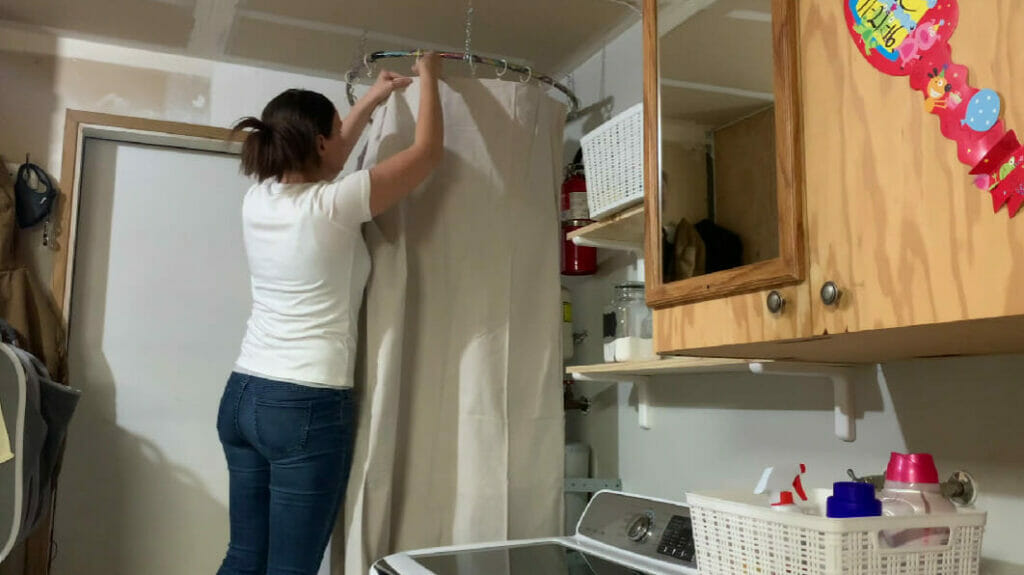
Hanging a curtain or drape in front of the outlet box is a simple and affordable solution.
Choose a fabric that matches your decor, and your outlet box is out of sight! You can easily access the box when needed by pulling back the curtain.
| Materials |
|---|
| Curtain or drape |
| Curtain rod |
| Curtain rings or clips |
| Hook and loop tape or adhesive strips |
| Scissors |
| Measuring tape |
| Drill (optional) |
| Screws (optional) |
| Steps |
|---|
| Step 1. Measure the width and height of the washing machine outlet box. This will help you determine the size of the curtain or drape needed. |
| Step 2. Choose a curtain or drape slightly wider and longer than the washing machine outlet box. Ensure it is made of a heavy material to cover the outlet box completely. |
| Step 3. Install a curtain rod above the washing machine outlet box. You can do this by using a drill to make holes and inserting screws or adhesive strips to attach the rod to the wall. |
| Step 4. Using curtain rings or clips, hang the curtain or drape on the rod. |
| Step 5. Position the curtain or drape to cover the washing machine outlet box completely. |
| Step 6. Use the hook and loop tape or adhesive strips to attach the curtain or drape to the wall on either side of the outlet box. Ensure the tape or strips are strong enough to hold the curtain or drape in place. |
| Step 7. Trim any excess fabric from the bottom of the curtain or drape using scissors. |
| Step 8. Adjust the position of the curtain or drape as necessary to ensure that the washing machine outlet box is completely hidden. |
Safety Tips and Considerations
Before we dive into hiding your washing machine outlet box, let’s talk about a few safety tips and considerations to remember!
First, you want to ensure that your hands are totally dry when working near a washing machine outlet box to avoid any risk of electrical shock.
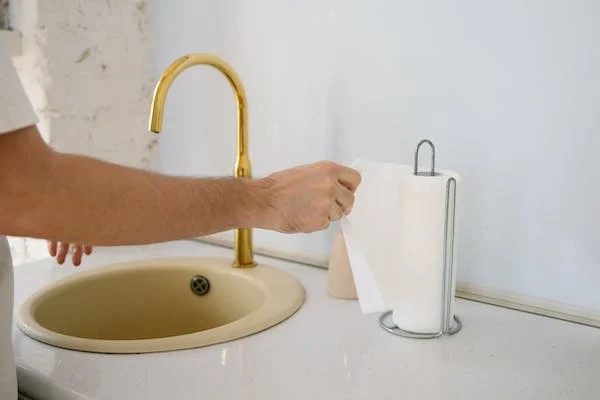
I can’t stress enough the importance of taking these precautions. Always unplug the washing machine before trying to hide the outlet box or doing any maintenance.
When looking at various options to hide your washing machine outlet, ensure the solution you pick still allows easy access to the box in case of a water leak or any maintenance tasks.
Hinges or a removable panel are great options to keep in mind. Believe it or not, you also want to double-check that your hooks and fasteners are sturdy and secure.
The last thing you want is for any coverings to fall and cause damage or accidents while the washing machine is full throttle!
Hiring a Professional
Let me tell you, hiding a washing machine outlet box doesn’t have to be a challenging task.
But if you’re short on time, or the idea of a DIY project just isn’t appealing, there’s no shame in hiring a pro to do the dirty work for you. Trust me; they’ll get the job done quickly and efficiently.

Now, I’ve seen my share of handymen and professionals who are great at what they do. Before you hire someone, I always recommend doing a little research.
Check out online reviews, ask friends or neighbors for recommendations, and make a few phone calls.
Finding the right person for the job is essential, especially regarding the highly sensitive and essential laundry area.
Once you find the professional who fits the bill, give them the specifics of what you need, including the size of your washing machine outlet box, your budget, and any aesthetic preferences.
They might even share some smart ideas you haven’t considered, like using a hanging plant or building a custom beadboard box to match your laundry room decor.

Budget for Hiring a Professional
Now, let’s talk budget. Remember, you get what you pay for, so it’s essential to weigh the pros and cons of each candidate, keeping in mind their experience, skills, and price range.
While you don’t want to break the bank, don’t forget that hiring an expert is an investment in your home’s functionality and appearance.
In the end, trust your instincts and choose the professional you feel most comfortable working with. Hand over the reins and let them work their magic – transforming your laundry area into a stylish, clutter-free space.
Remember, when it comes to our homes, a little professional help can go a long way in making every nook and cranny picture-perfect!
Wrapping Up
Hiding a washing machine outlet box is a simple and effective way to improve the aesthetics of your laundry room.
It’s essential to consider your budget, space, and personal preferences when deciding which one to choose.
Nonetheless, whatever option you choose, it’s essential to ensure that the washing machine outlet box remains accessible for maintenance and repair.
This is especially important if you build an enclosure around the box, as you must provide adequate ventilation and access to the shut-off valves.
It is also crucial to follow the manufacturer’s instructions when installing any covers or brackets to ensure they are installed correctly and do not interfere with the box’s operation.
References
Organizations:
- National Kitchen & Bath Association (NKBA): https://nkba.org/
- National Association of Home Builders (NAHB): https://www.nahb.org/
Books:
- “The Complete Book of Home Organization” by Toni Hammersley
- “The Laundry Room” by Livi Callister
Websites:
- Houzz: https://www.houzz.com/
Video References
Ta’Meca Croom
April Wilkerson
Pneumatic Addict
